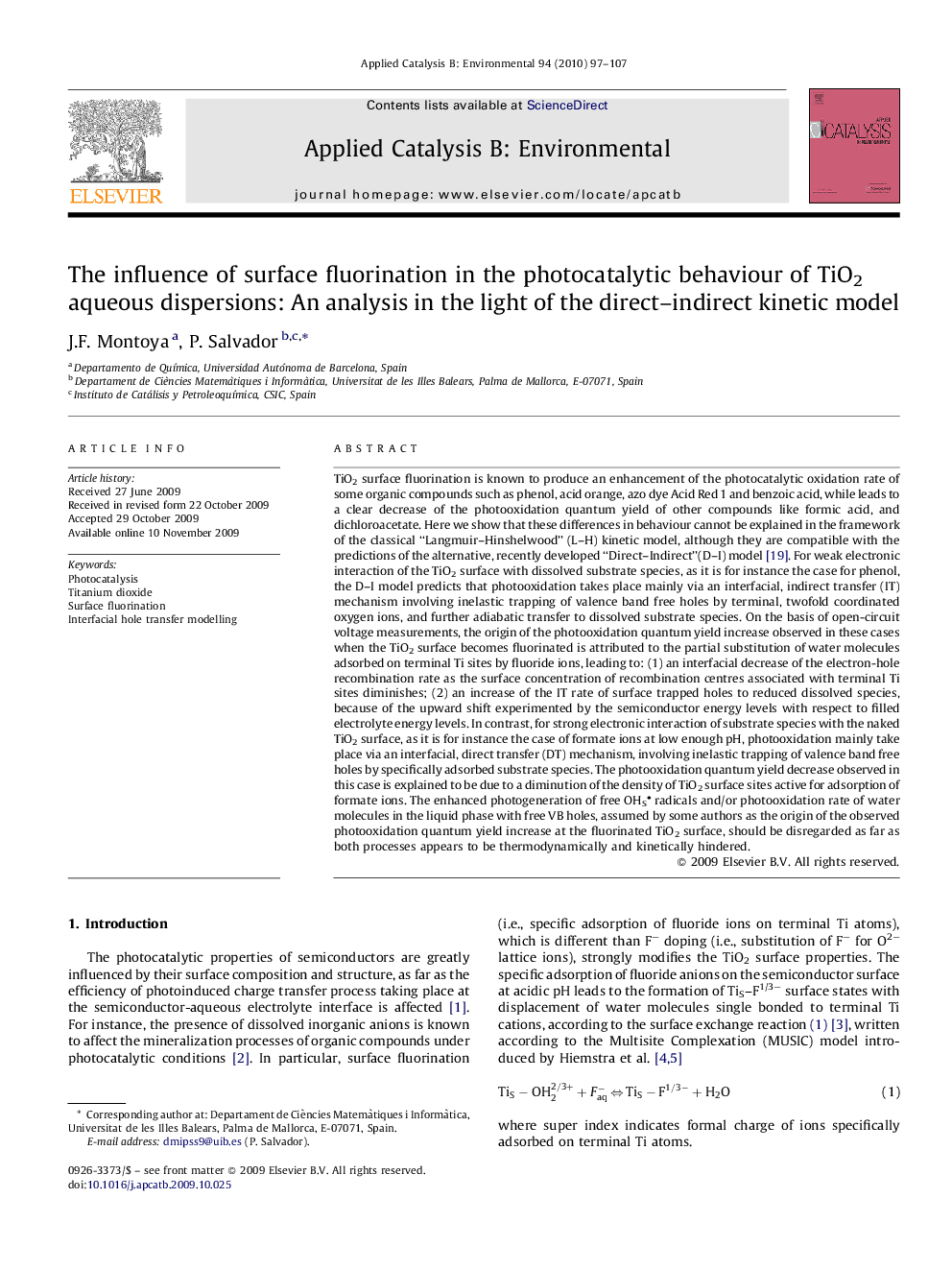| کد مقاله | کد نشریه | سال انتشار | مقاله انگلیسی | نسخه تمام متن |
|---|---|---|---|---|
| 47421 | 46471 | 2010 | 11 صفحه PDF | دانلود رایگان |

TiO2 surface fluorination is known to produce an enhancement of the photocatalytic oxidation rate of some organic compounds such as phenol, acid orange, azo dye Acid Red 1 and benzoic acid, while leads to a clear decrease of the photooxidation quantum yield of other compounds like formic acid, and dichloroacetate. Here we show that these differences in behaviour cannot be explained in the framework of the classical “Langmuir–Hinshelwood” (L–H) kinetic model, although they are compatible with the predictions of the alternative, recently developed “Direct–Indirect”(D–I) model [19]. For weak electronic interaction of the TiO2 surface with dissolved substrate species, as it is for instance the case for phenol, the D–I model predicts that photooxidation takes place mainly via an interfacial, indirect transfer (IT) mechanism involving inelastic trapping of valence band free holes by terminal, twofold coordinated oxygen ions, and further adiabatic transfer to dissolved substrate species. On the basis of open-circuit voltage measurements, the origin of the photooxidation quantum yield increase observed in these cases when the TiO2 surface becomes fluorinated is attributed to the partial substitution of water molecules adsorbed on terminal Ti sites by fluoride ions, leading to: (1) an interfacial decrease of the electron-hole recombination rate as the surface concentration of recombination centres associated with terminal Ti sites diminishes; (2) an increase of the IT rate of surface trapped holes to reduced dissolved species, because of the upward shift experimented by the semiconductor energy levels with respect to filled electrolyte energy levels. In contrast, for strong electronic interaction of substrate species with the naked TiO2 surface, as it is for instance the case of formate ions at low enough pH, photooxidation mainly take place via an interfacial, direct transfer (DT) mechanism, involving inelastic trapping of valence band free holes by specifically adsorbed substrate species. The photooxidation quantum yield decrease observed in this case is explained to be due to a diminution of the density of TiO2 surface sites active for adsorption of formate ions. The enhanced photogeneration of free OHS radicals and/or photooxidation rate of water molecules in the liquid phase with free VB holes, assumed by some authors as the origin of the observed photooxidation quantum yield increase at the fluorinated TiO2 surface, should be disregarded as far as both processes appears to be thermodynamically and kinetically hindered.
Journal: Applied Catalysis B: Environmental - Volume 94, Issues 1–2, 1 February 2010, Pages 97–107